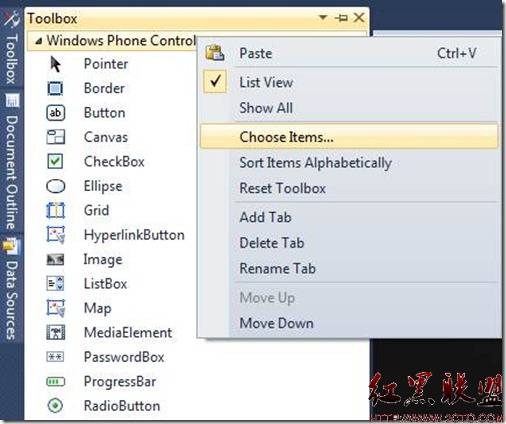Cocos2Dx 内存管理封装
刚接触Cocos2Dx感觉,架构比较清晰合理,但就是内存管理机制对于本人来说实在是感觉很奇怪。
每次创建对象都是用creatXXX方法,如果要保持对象指针还需要retain,销毁时还要记得release,着实很烦人。
本人尝试了使用类似智能指针的方式存储,感觉还不错。
先说一下原先Cocos2Dx自动内存管理机制:
在Cocos2Dx的CCObject类中有这么两个函数retain、release,和一个变量m_uReference,用于控制引用计数,当调用一次retain 引用计数加一,当调用release时引用计数减一、如果此时引用计数为0则delete,另外还有一个函数autorelease,这个函数会在所以的静态工厂方法中调用(CCXXX::create()),此方法的作用是将对象放入内存管理池(CCPoolManage)而在每一帧结束时清除,引用计数为1(只有内存管理池拥有的)的对象。
在官方的例子中可以看出不希望开发者手工管理内存(new),但是如果自动管理就必须每时每刻记得retain、release,否则要么是野指针要么就会内存泄露,如果在项目后期才注意此问题,那时可能已经无力回天了。
所以我写了一个类似智能指针的模版解决此问题,不废话了,上代码:
[cpp]
#ifndef _CCPTR_H_
#define _CCPTR_H_
NS_CC_BEGIN
template<class _Ty>
class CCPtr
{
public:
typedef CCPtr<_Ty> _Myt;
explicit CCPtr(_Ty *_Ptr = 0)
: _Myptr(_Ptr)
{
CC_SAFE_RETAIN(_Myptr);
}
explicit CCPtr(_Myt const & _Ref)
: _Myptr(_Ref.get())
{
CC_SAFE_RETAIN(_Myptr);
}
_Myt& operator=(_Myt& _Right)
{
_Ty* ptr = _Right.get();
CC_SAFE_RETAIN(ptr);
CC_SAFE_RELEASE(_Myptr);
_Myptr = ptr;
return (*this);
}
_Myt& operator=(_Ty* ptr)
{
CC_SAFE_RETAIN(ptr);
CC_SAFE_RELEASE(_Myptr);
_Myptr = ptr;
return (*this);
}
template<class _Other>
operator CCPtr<_Other>()
{
return (CCPtr<_Other>(*this));
}
template<class _Other>
_Myt& operator=(CCPtr<_Other>& _Right)
{
_Other* ptr = _Right.get();
CC_SAFE_RETAIN(ptr);
CC_SAFE_RELEASE(_Myptr);
_Myptr = ptr;
return (*this);
}
template<class _Other>
CCPtr(CCPtr<_Other>& _Right)
: _Myptr(_Right.get())
{
CC_SAFE_RETAIN(_Myptr);
}
~CCPtr()
{
CC_SAFE_RELEASE(_Myptr);
}
_Ty& operator*() const
{
return (*get());
}
_Ty *operator->() const
{
return (get());
}
_Ty *get() const
{
return (_Myptr);
}
private:
_Ty *_Myptr; // the wrapped object pointer
};
template<class T, class U> inline bool operator==(CCPtr<T> & a, CCPtr<U> & b)
{
return a.get() == b.get();
}
template<class T, class U> inline bool operator!=(CCPtr<T> & a, CCPtr<U> & b)
{
return a.get() != b.get();
}
typedef CCPtr<CCAction> CCActionPtr;
typedef CCPtr<CCActionInterval> CCActionIntervalPtr;
typedef CCPtr<CCActionCamera> CCActionCameraPtr;
typedef CCPtr<CCActionManager> CCActionManagerPtr;
typedef CCPtr<CCActionEase> CCActionEasePtr;
typedef CCPtr<CCPageTurn3D> CCActionPageTurn3DPtr;
typedef CCPtr<CCGridAction> CCActionGridPtr;
typedef CCPtr<CCProgressTimer> CCActionProgressTimerPtr;
typedef CCPtr<CCGrid3D> CCActionGrid3DPtr;
typedef CCPtr<CCActionInstant> CCActionInstantPtr;
typedef CCPtr<CCActionTween> CCActionTweenPtr;
typedef CCPtr<CCAffineTransform> CCAffineTransformPtr;
typedef CCPtr<CCDictionary> CCDictionaryPtr;
typedef CCPtr<CCObject> CCObjectPtr;
typedef CCPtr<CCArray> CCArrayPtr;
typedef CCPtr<CCSet> CCSetPtr;
typedef CCPtr<CCAutoreleasePool> CCAutoreleasePoolPtr;
typedef CCPtr<CCInteger> CCIntegerPtr;
typedef CCPtr<CCFloat> CCFloatPtr;
typedef CCPtr<CCDouble> CCDoublePtr;
typedef CCPtr<CCBool> CCBoolPtr;
typedef CCPtr<CCString> CCStringPtr;
typedef CCPtr<CCZone> CCZonePtr;
typedef CCPtr<CCAnimation> CCAnimationPtr;
typedef CCPtr<CCNode> CCNodePtr;
// add other typedef
// ...
NS_CC_END
#endif // _CCPTR_H_
#ifndef _CCPTR_H_
#define _CCPTR_H_
NS_CC_BEGIN
template<class _Ty>
class CCPtr
{
public:
typedef CCPtr<_Ty> _Myt;
explicit CCPtr(_Ty *_Ptr = 0)
: _Myptr(_Ptr)
{
CC_SAFE_RETAIN(_Myptr);
}
explicit CCPtr(_Myt const & _Ref)
: _Myptr(_Ref.get())
{
CC_SAFE_RETAIN(_Myptr);
}
_Myt&
补充:移动开发 , 其他 ,




